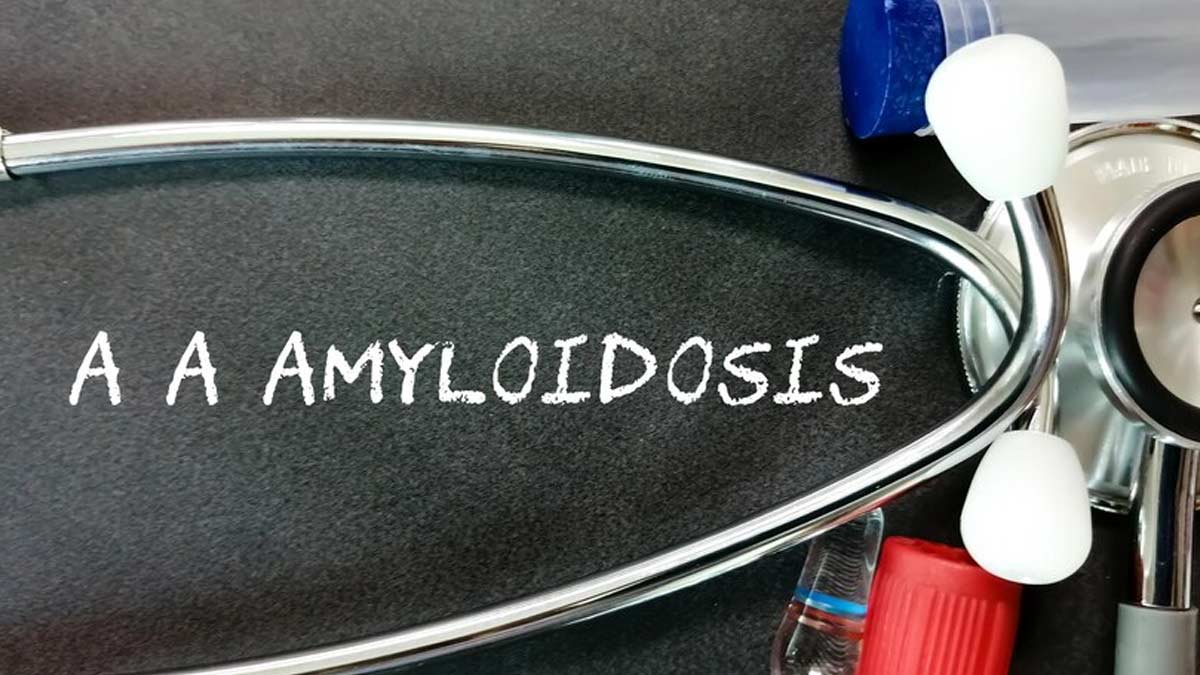
Amyloidosis is a relatively rare and complex medical condition that affects various organs and tissues in the body. It occurs when abnormal proteins called amyloids accumulate in these tissues, disrupting their normal structure and function.
Table of Content:-
To know more about this disorder OnlyMyHealth reached out to Dr Hisham Ahamed, Associate Professor, Cardio-Oncology, Amrita Hospital, Kochi.
What Is Amyloidosis?
Amyloidosis is a rare and perplexing disorder that occurs when a normally soluble protein amyloid misfolds and aggregates, forming insoluble fibrils that accumulate in different organs, such as the heart, kidneys, liver, and nervous system, making them not working properly.
Types Of Amyloidosis
Amyloidosis can be categorised into three main types based on the origin of the abnormal protein:
Primary Amyloidosis
This type is associated with a bone marrow disorder where plasma cells produce excessive amounts of abnormal antibodies.
Secondary Amyloidosis
It occurs as a result of chronic inflammatory conditions such as rheumatoid arthritis, tuberculosis, or certain cancers. In these cases, the body produces amyloids as a response to ongoing inflammation.
Also read: Whey Protein Or Diet: What Matters The Most For Weight Loss
Hereditary Amyloidosis
Some individuals inherit gene mutations that cause the production of abnormal proteins, leading to amyloid deposits in various organs.

Symptoms Of Amyloidosis
The symptoms of amyloidosis can vary depending on the organs affected. Common signs and symptoms may include:
- Fatigue and weakness
- Swelling in the ankles and legs
- Shortness of breath
- Weight loss
- Numbness or tingling in the hands or feet
- Enlarged tongue
- Skin changes, such as easy bruising or a waxy appearance
Diagnosis Of Amyloidosis
Diagnosing amyloidosis can be difficult as its signs and symptoms can resemble those of more common illnesses. However, early diagnosis is crucial to prevent further organ damage. To determine the presence of amyloidosis, abnormal proteins in blood and urine can be analysed. Additional testing, such as thyroid and kidney function tests may be necessary for individuals with specific symptoms.

Also read: Whey Protein: How To Use It To Lose Weight & Build Muscle
Tissue samples can also be examined to confirm the presence of amyloidosis and determine the type of amyloid present. Various imaging tests can aid in the classification of amyloidosis, which can influence treatment choices.
Treatment
There are therapies available which promote the function of injured organs while reducing the generation of the specific amyloid-forming protein. Different treatments are needed depending on the type of amyloidosis. For example, chemotherapy is used for AL amyloidosis, gene silencing therapies are used for hereditary ATTR amyloidosis, and anti-inflammatory medications are used for AA amyloidosis.
Additional therapies may be needed to manage specific organ involvement, such as heart medications, liver transplantation, or dialysis for kidney treatment.
Takeaway
Amyloidosis is a complex disorder involving the accumulation of abnormal proteins in various organs and tissues. While it is relatively uncommon, understanding its causes, symptoms, diagnosis, and treatment options is essential for early detection and appropriate management. If you or someone you know experiences any unexplained symptoms, it is important to seek medical attention for a proper evaluation and diagnosis.
This article is written by the inputs shared by Dr. Hisham Ahamed, Associate Professor, Cardio-Oncology, Amrita Hospital, Kochi.
Also watch this video
How we keep this article up to date:
We work with experts and keep a close eye on the latest in health and wellness. Whenever there is a new research or helpful information, we update our articles with accurate and useful advice.
Current Version